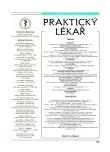The laboratory for diagnostics of malignant hyperthermia
Laboratoř pro diagnostiku maligní hypertermie
Maligní hypertermie (MH) je farmakogenetické onemocnění, které je jednou z obávaných, život pacienta bezprostředně ohrožujících komplikací celkové anestezie. Spouštěcími substancemi manifestace onemocnění jsou některé látky (současná volatilní anestetika a depolarizující svalová relaxancia) běžně užívané k úvodu a vedení celkové anestezie. Významnými činiteli v dispenzarizaci pacientů s MH-dispozicí jsou anesteziolog a praktický lékař. Jedinou objektivní metodou pro stanovení diagnózy MH-dispozice je v současnosti metoda tzv. in vitro kontrakčního testu. Při Anesteziologicko-resuscitační klinice ve Fakultní nemocnici u sv. Anny v Brně bylo zřízeno Národní centrum pro diagnostiku maligní hypertermie a byla vybudována laboratoř pro diagnostiku tohoto onemocnění. Plánované operační výkony u MH-pozitivních pacientů je nutno provádět odpovídajícím anesteziologickým postupem ve zdravotnických lůžkových zařízeních vybavených personálně, materiálově a lékově pro řešení případného vzniku MH-krize. Osobní nošení mezinárodního průkazu nositele MH-dispozice snižuje riziko vzniku MH-krize u MH-pozitivních pacientů při nutnosti podání celkové anestezie u akutních stavů a onemocnění, například u traumat. Zavedení in vitro kontrakčního testu pro diagnostiku maligní hypertermie a zřízení Národního centra pro diagnostiku maligní hypertermie snižuje u populace v České republice riziko vzniku závažné komplikace při podání celkové anestezie.
Klíčová slova:
maligní hypertermie – diagnostika – in vitro kontrakční test – laboratoř.
Authors:
I. Schröderová 1; Z. Handl 1; J. Pivnička 2; H. Samková 2; I. Říha 1
Authors‘ workplace:
Anesteziologicko-resuscitační klinika FN u sv. Anny, Brno
přednosta doc. MUDr. V. Šrámek, PhD.
1; Ústav soudního lékařství FN u sv. Anny, Brno
přednosta prof. MUDr. M. Hirt, CSc.
2
Published in:
Prakt. Lék. 2005; 85(11): 638-641
Category:
Diagnostis
Overview
Malignant hyperthermia (MH) is a pharmacogenetic disease which is one of the feared life-threatening complications of general anaesthesia. Some substances (contemporary volatile anaesthetics and depolarizing muscle relaxants) commonly used for the induction and maintaining of general anaesthesia are triggering agents for disease manifestation. Anaesthesiologists and general practitioners are crucial for the identification of MH-susceptible patients. At present, the only objective method for determining the diagnosis of MHsusceptibility is the method of the so-called in vitro contracture test. As part of the Department of Anaesthesiology and Intensive Care of the St. Anne’s University Hospital in Brno in the Czech Republic, the National Centre for Diagnostics of Malignant Hyperthermia and the laboratory for diagnostics of this disease were set up. It is necessary to perform planned operations in MH-positive patients using an appropriate method of anaesthesia in inpatient health-care settings that are staffed accordingly and equipped with materials and drugs for the management of any possible MH-crisis. Carrying the international MH-Emergency-Card reduces the risk of MH-crisis development in MH-positive patients in case of general anaesthesia administration in acute conditions and diseases, e.g. in injuries. The establishment of the National Centre for Diagnostics of Malignant Hyperthermia and the introduction of the in vitro contracture test for the diagnostics of malignant hyperthermia reduce the risk of a serious complication of general anaesthesia in the population of the Czech Republic.
Key words:
malignant hyperthermia – diagnostics – in vitro contracture test – laboratory.
Labels
General practitioner for children and adolescents General practitioner for adultsArticle was published in
General Practitioner

2005 Issue 11
- Memantine in Dementia Therapy – Current Findings and Possible Future Applications
- Metamizole vs. Tramadol in Postoperative Analgesia
- Metamizole at a Glance and in Practice – Effective Non-Opioid Analgesic for All Ages
- Memantine Eases Daily Life for Patients and Caregivers
- What Effect Can Be Expected from Limosilactobacillus reuteri in Mucositis and Peri-Implantitis?
Most read in this issue
- Quality of life – defining the concept and its significance for medicine and health care
- Essential hypertension – a review
- Treatment and clinical manifesta- tions of primary intraocular lymphoma
- Risk factors and prevalence of bad posture in school-age children
